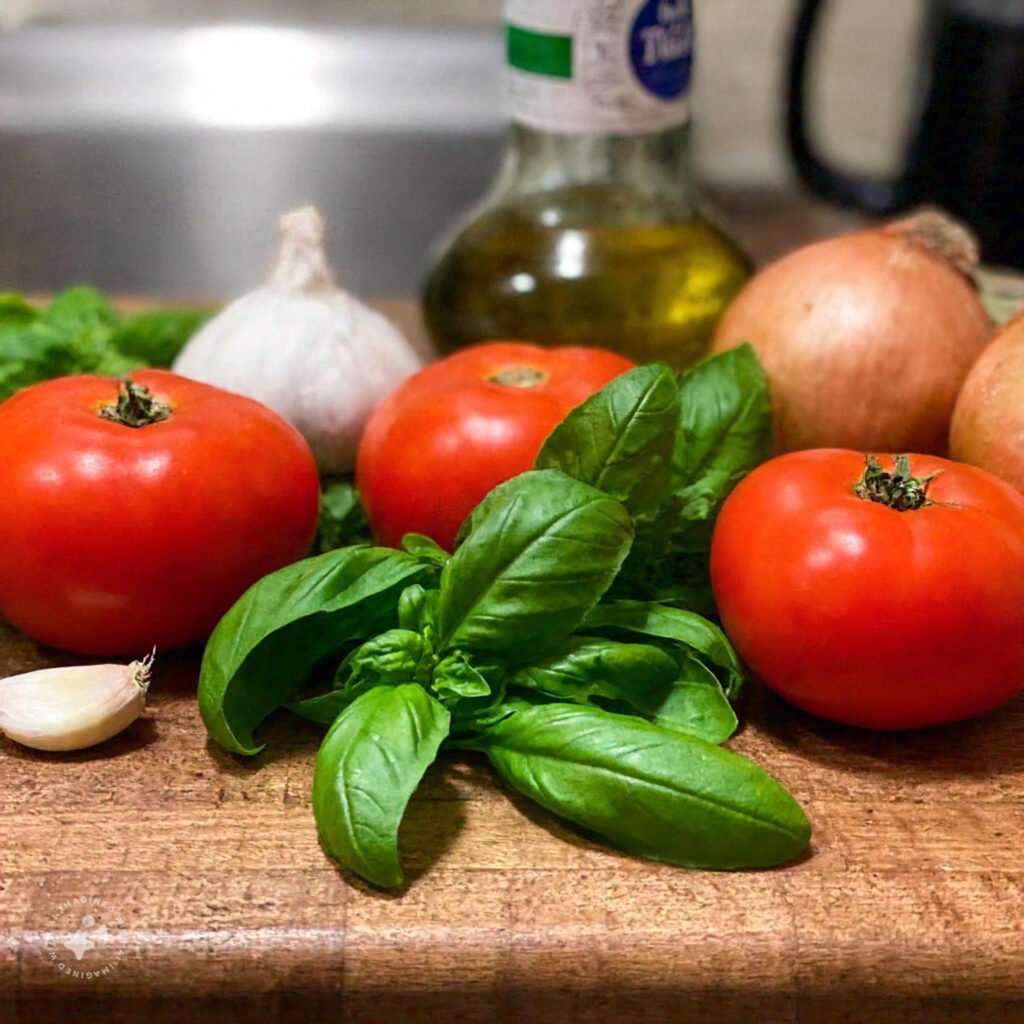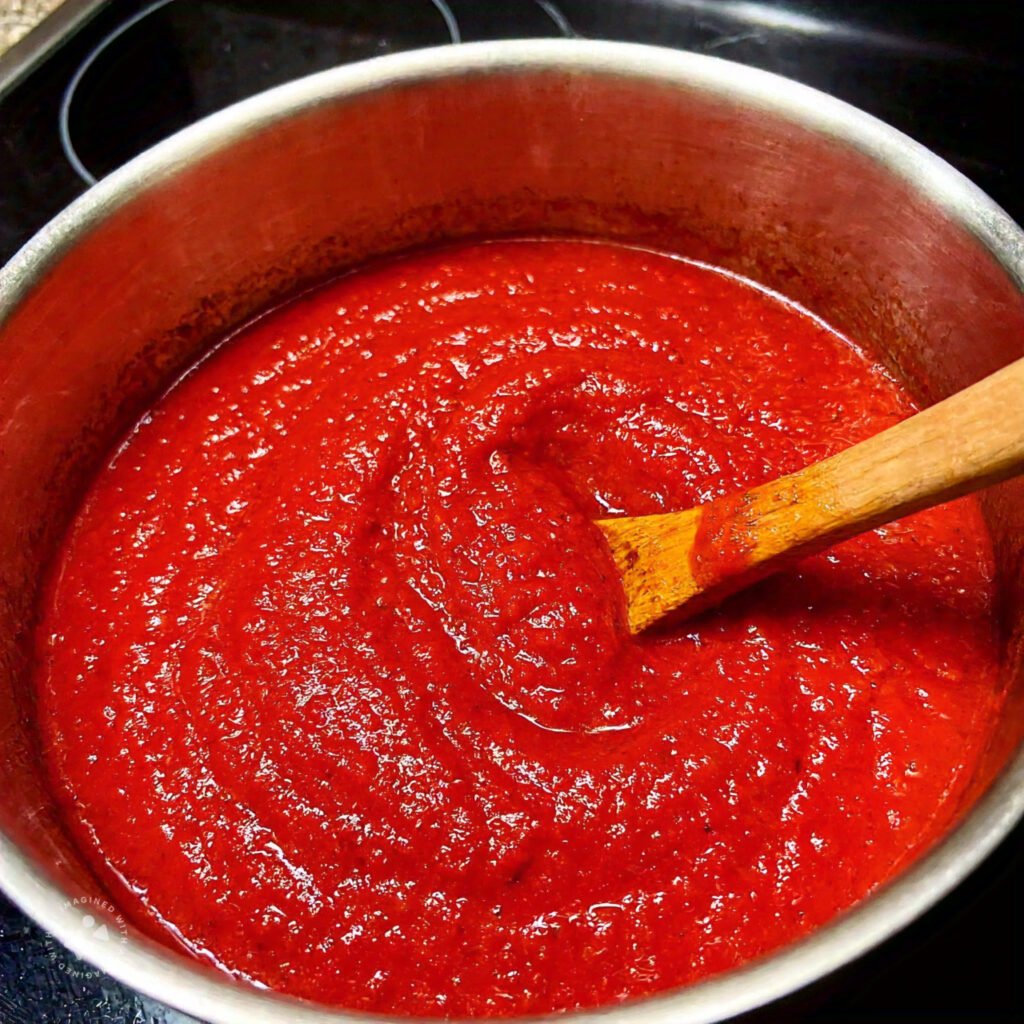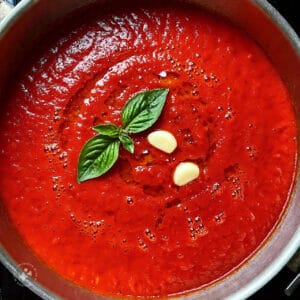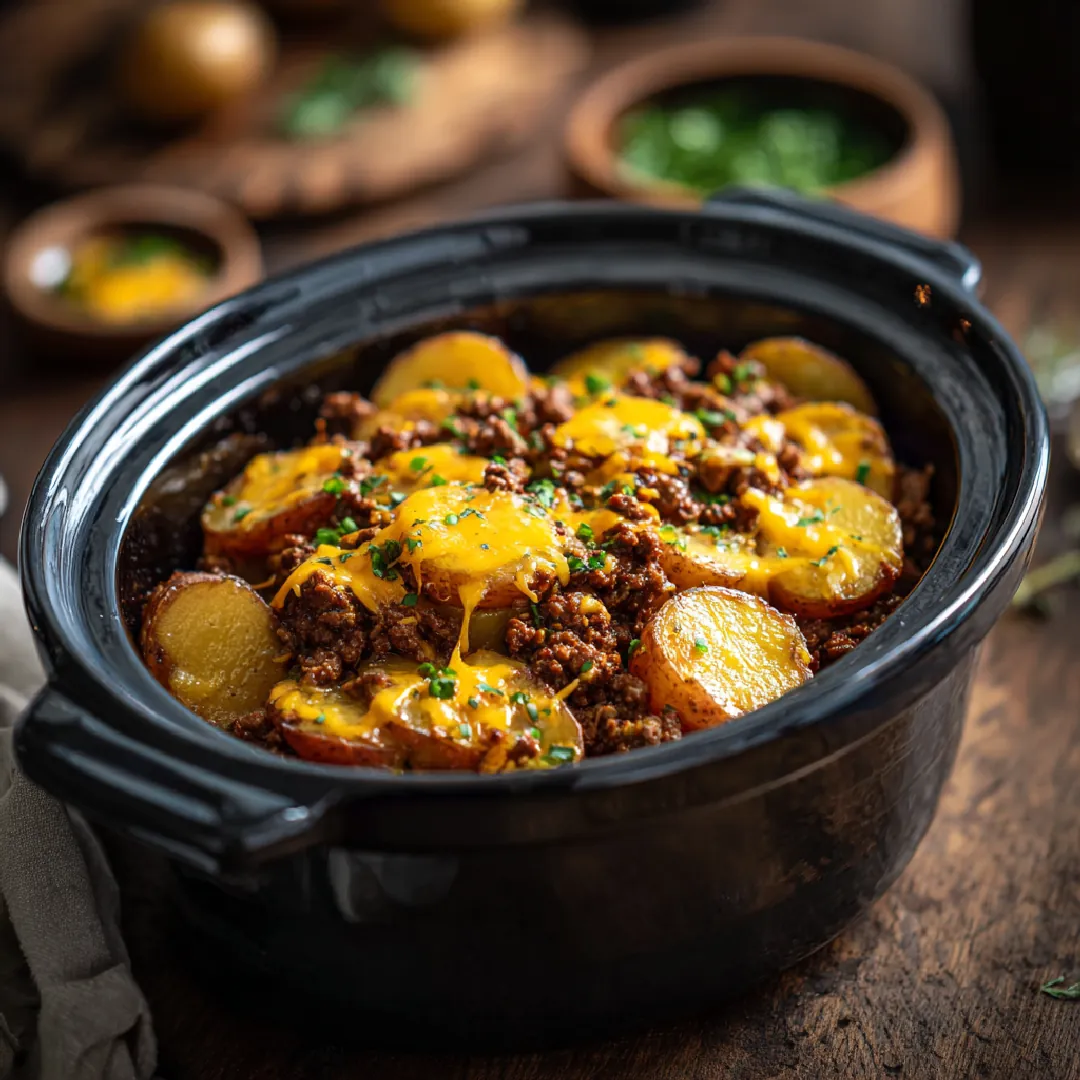Table of Contents
What is the one ingredient that makes spaghetti sauce better? This question has puzzled home cooks for years, but the answer might be simpler than you think. Whether you’re whipping up a quick meal or spending hours perfecting your Sunday sauce, there’s one magic ingredient that has the power to transform your dish.
Curious? You’re in the right place. Let’s dive deep into the magic of spaghetti sauce and reveal the one ingredient that makes all the difference.
The Secret to Perfect Spaghetti Sauce
If you’ve ever wondered why some sauces taste so much better than others, you’re not alone. Everyone can throw tomatoes into a pot, add garlic, and hope for the best, but it takes something special to elevate spaghetti sauce into a memorable experience.
Why the Right Ingredient Matters
Have you ever eaten a plate of spaghetti that tasted bland or flat, no matter how much seasoning you added? The problem usually isn’t the recipe—it’s what’s missing. The right ingredient doesn’t just add flavor; it brings balance. Think of it like a movie. A great lead actor can’t shine without the perfect supporting cast.
When making spaghetti sauce, every single element works together. The tomatoes bring tanginess, the garlic offers depth, and the herbs provide that touch of fragrance. But there’s always room for something extra—a magical ingredient that ties everything together.
Understanding the Foundation of Spaghetti Sauce
Before we reveal the one ingredient that makes spaghetti sauce so much better, let’s talk about its core foundation. Every great sauce starts with a handful of basic ingredients.
Traditional Ingredients in Spaghetti Sauce
Here’s what you’ll typically find in most spaghetti sauce recipes:

- Tomatoes: Crushed, diced, or pureed, they are the heart of the sauce.
- Garlic: The aromatic backbone of almost every Italian dish.
- Onions: For sweetness and a little extra flavor dimension.
- Olive Oil: The fat that carries the flavors.
- Herbs: Basil, oregano, thyme, or bay leaves for that classic Italian aroma.
While these staples are essential, they’re just the beginning. Most people rely on this basic foundation, but true flavor comes from adding a twist.
Balancing Flavors: Sweet, Savory, and Tangy
The beauty of a perfect spaghetti sauce lies in balance. Too acidic? It feels harsh. Too sweet? It loses depth. Too bland? Forget about it. Achieving harmony between sweet, savory, and tangy flavors requires precision—and the secret ingredient plays a huge role here.
Think of spaghetti sauce as a musical symphony. Each ingredient represents an instrument. The tomatoes are the violins, the garlic is the cello, and the olive oil is the conductor. But without the “secret ingredient” (we’ll get there soon, I promise), the melody doesn’t quite hit the right notes.
What Makes Spaghetti Sauce Stand Out?
Some sauces you try are simply unforgettable. They cling to the pasta just right, burst with flavor, and leave you wondering what makes them so good.
Enhancing Depth of Flavor with Umami
Umami is that savory, mouthwatering quality that makes dishes feel rich and satisfying. Without it, your spaghetti sauce might feel one-dimensional. Ingredients like tomatoes naturally contain umami, but enhancing it can take your sauce to the next level.
“A pinch of something unexpected can transform ordinary spaghetti sauce into a masterpiece.”
Common Ingredients People Overlook
Many home cooks stick to the basics and miss out on opportunities to experiment. Some overlooked gems include:
- Anchovy Paste: Yes, it sounds odd, but it adds an umami punch without a fishy taste.
- A Dash of Balsamic Vinegar: A little acidity can elevate the natural sweetness of tomatoes.
- Grated Carrots: They add sweetness and help balance acidity naturally.
But even these aren’t the magic ingredient. That one’s still coming up.
Revealing the One Ingredient for Better Spaghetti Sauce
Drumroll, please… The one ingredient that makes spaghetti sauce so much better is fresh basil. 🌿
The Magic of Fresh Basil
Fresh basil isn’t just an herb—it’s a game-changer. Its aroma, flavor, and versatility can transform any sauce into something extraordinary. While dried basil has its uses, it simply doesn’t compare to the vibrant, slightly sweet taste of fresh leaves.
“Fresh basil doesn’t just flavor your sauce; it breathes life into it.”
How Fresh Basil Transforms the Sauce
Adding fresh basil to spaghetti sauce does a few incredible things:
- Brightens the Flavor: It cuts through the richness of tomatoes and brings a fresh, almost citrusy note.
- Adds Depth: Combined with garlic and olive oil, it creates a flavor that feels both earthy and refined.
- Elevates the Aroma: Let’s be real, half of tasting is smelling. Fresh basil gives your sauce that irresistible fragrance.
Now, you might be wondering, “Why does fresh basil make such a big difference?” The answer lies in its essential oils, which release their full power when added at the right time.
How to Incorporate Fresh Basil into Your Sauce
Here’s where the magic happens. You can’t just toss basil into the pot and hope for the best. Timing and technique matter more than you think.
Timing Is Everything: When to Add Basil
The best time to add fresh basil is toward the end of cooking. Why? Cooking basil for too long can destroy its delicate flavor and aroma. Add it in the last 5–10 minutes of simmering, or better yet, use it as a garnish right before serving.
Tips for Using Fresh vs. Dried Basil
While fresh basil is the star, dried basil still has its place in quick or off-season recipes. If you don’t have access to fresh leaves:
- Use dried basil during the early stages of cooking to infuse the sauce.
- Always adjust the quantity—dried herbs are more concentrated.
Exploring Other Enhancements for Spaghetti Sauce
While fresh basil is undeniably the one ingredient that can make spaghetti sauce extraordinary, there’s room for experimentation to layer even more flavor into your sauce. Let’s look at a few other elements that can elevate your cooking game.
The Role of Parmesan Cheese
Grated Parmesan cheese isn’t just for topping spaghetti. Adding it directly to your sauce can create a creamy texture and add a salty, umami-packed punch. High-quality Parmesan or Pecorino Romano can elevate a sauce from good to gourmet.
Pro Tip:
Grate Parmesan rinds into the sauce and let them melt during simmering for an extra flavor boost.
Using Anchovies for Extra Umami
Anchovies may raise eyebrows, but these tiny fish are a secret weapon in many Italian kitchens. When sautéed in olive oil, they dissolve completely, leaving behind a savory richness that intensifies the sauce without tasting “fishy.”
When to Use:
Add a fillet or two while frying garlic and onions, letting them melt into the oil before adding tomatoes.
Common Mistakes When Making Spaghetti Sauce
Creating a flavorful spaghetti sauce is as much about what you don’t do as what you do. Avoiding these common pitfalls will help ensure your sauce comes out perfect every time.
Overcooking the Herbs
Fresh herbs, especially basil, lose their flavor quickly when exposed to prolonged heat. Overcooking them can leave your sauce tasting dull and lifeless. Remember to add them at the end of cooking or use them as a garnish.
Skipping the Seasoning Stages
Seasoning your sauce isn’t a one-and-done deal. Adding salt, pepper, or other seasonings at the beginning, middle, and end ensures each ingredient is perfectly balanced. Always taste as you go.
Practical Tips for Perfecting Your Sauce
Mastering spaghetti sauce isn’t just about ingredients—it’s also about technique. Here are some tried-and-true tips to help you make your sauce the best it can be.
Simmering to Unlock Flavors

A rushed sauce is a sad sauce. Allowing your spaghetti sauce to simmer gently for at least 30–60 minutes gives the flavors time to meld together. The tomatoes become sweeter, the spices more fragrant, and the overall texture smoother.
Pro Tip:
Keep the heat low to avoid scorching the bottom of your pot. Stir occasionally to prevent sticking.
Storing and Freezing Homemade Sauce
Made a big batch? Good call! Spaghetti sauce freezes beautifully, making it perfect for quick meals later. Here’s how:
- Cool Completely: Let the sauce cool to room temperature before storing.
- Use Airtight Containers: Store in freezer-safe jars or bags to avoid freezer burn.
- Label and Date: Trust me, you’ll forget when you made it.
When reheating, add a splash of water or broth to bring back its original consistency.
The Science Behind Flavor Combinations
Have you ever wondered why certain flavors taste amazing together? The secret lies in food chemistry, and spaghetti sauce is no exception.
Why Fresh Herbs Outshine Dried
Fresh herbs like basil contain essential oils that release their aroma and flavor more powerfully than dried herbs. When these oils are heated, they interact with the other ingredients, creating a symphony of flavors that can’t be replicated with dried substitutes.
Fun Fact:
The smell of basil comes from compounds called linalool and eugenol, which trigger pleasure centers in the brain.
The Chemistry of Umami and Sweetness
Tomatoes are naturally high in glutamates, the compounds responsible for umami. Pairing them with ingredients like Parmesan, anchovies, or even soy sauce enhances this savory taste. Meanwhile, a hint of sweetness from caramelized onions or grated carrots balances out the acidity of the tomatoes.
FAQs
What Are Some Substitutes for Fresh Basil?
If you don’t have fresh basil, parsley, cilantro, or even arugula can provide a fresh, peppery twist. Dried basil works in a pinch, but it won’t have the same brightness.
Can You Use Other Herbs Instead?
Absolutely! Oregano, thyme, or rosemary can bring a different flavor profile to your sauce. Just be cautious, as these herbs can overpower if overused.
Is There a Vegan Alternative for Parmesan?
Nutritional yeast is a fantastic vegan substitute for Parmesan. It’s rich in umami and has a cheesy, nutty flavor that pairs perfectly with spaghetti sauce.
Can You Add Sugar to Spaghetti Sauce?
Yes, but sparingly. A small pinch of sugar can help balance the acidity of the tomatoes, especially if they’re not in season. However, don’t overdo it—you don’t want dessert sauce!
What’s the Best Type of Tomato to Use?
San Marzano tomatoes are often considered the gold standard for sauce-making due to their natural sweetness and low acidity. Canned versions work beautifully, too.
Why Does My Sauce Taste Bitter?
Bitterness can come from overcooked garlic, poor-quality tomatoes, or excessive dried herbs. Adding a pinch of sugar or a splash of cream can neutralize the bitterness.
Conclusion: Elevating Your Spaghetti Sauce to New Heights
Spaghetti sauce is more than just a condiment—it’s a canvas for culinary creativity. By understanding the core elements and learning to balance flavors, you can create a sauce that’s truly unforgettable. And with fresh basil as your not-so-secret weapon, every plate of pasta you serve will taste like a masterpiece.
So, the next time you’re in the kitchen, remember this: cooking is as much about heart as it is about skill. Experiment, taste, and most importantly, have fun. After all, the best ingredient in any recipe is always you. ❤️🍝
You might also like Why Put Brown Sugar in Spaghetti Sauce?





